California takes sweeping steps to conserve water in drought
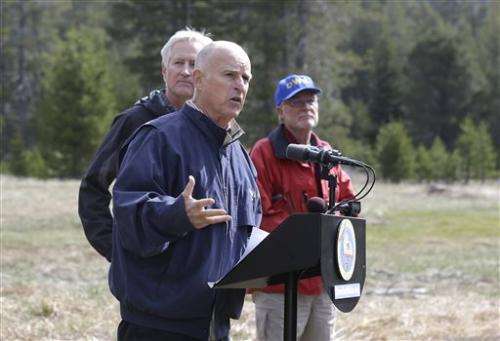
Gary Whitlock watched water run to a sidewalk as gardeners hosed down a bed of marigolds outside an Orange County office building and questioned whether California's latest attempt to curb water use would be any more successful than previous efforts in the drought-stricken state.
"You see people that just run water all the time, people that are watering their lawns, parks that are not using recycled water," Whitlock said. "This has been going on for years, and everybody that I talk to says, 'Oh, well, you know, it's going to rain, El Nino's coming."
Whitlock's observation came after Gov. Jerry Brown ordered sweeping, unprecedented measures on Wednesday to save water in California as he stood in a brown meadow that's normally blanketed in snow.
Surveyors that day found the lowest water level in the Sierra Nevada snowpack in 65 years of record-keeping, signaling the fourth consecutive year of vanishing snow that California depends on to melt into rivers and replenish reservoirs.
"We're in a new era; the idea of your nice little green grass getting water every day, that's going to be a thing of the past," Brown said.
The governor's order requires cities and towns to cut water use by 25 percent. So far in the current drought, many Californians have not made changes to their daily routines to save water or taken a hit in their wallets because of it.
Early last year, Brown called for a 20 percent voluntary cutback, but the state achieved just half of that.
In recent years, cities have developed storage capacity and supplies to soften the blow of future dry years—a move that has insulated residents from the severity of the current drought.
In 1977, Brown asked for a voluntary 25 percent cut in water use during his first term as governor.
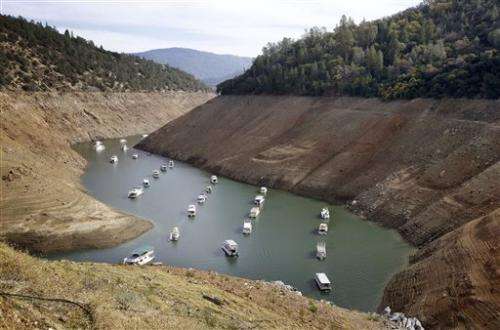
Nearly 40 years later, he warns that drought might be the new normal as he ramps up efforts to adapt. His executive order on Wednesday directed officials to impose statewide mandatory water restrictions and expand programs intended to reshape how Californians use water.
Cemeteries, golf courses and business headquarters must significantly cut back on watering the large landscapes. Local governments will tear out 50 million square feet of lawns and instead use drought-tolerant plants. And customers will get money for replacing old water-sucking appliances with efficient ones under a temporary rebate program.
The initiatives are part of the goal to reduce water use by 25 percent compared to levels in 2013—the year before Brown declared a drought emergency.
The order also directs local agencies to charge extra for high water use.
Water officials vowed to crack down on waste and illegal water diversion, acknowledging there has been spotty enforcement of existing rules limiting outdoor water use.
The order also prohibits new homes and developments from using drinkable water for irrigation if the structures lack water-efficient drip systems. In addition, the watering of decorative grasses on public street medians is banned.
"We have to pull together and save water in every way we can," Brown said.
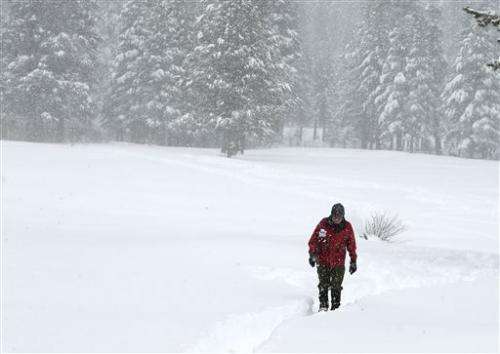
Critics of the Democratic governor said his order does not go far enough to address agriculture—the biggest water user in California.
The order contains no water reduction target for farmers. Instead, it requires many agricultural water suppliers to submit detailed drought management plans that include how much water they have and what they're doing to scale back.
After a drought in the previous decade, state officials acknowledged that some suppliers did not submit similar required plans. Mark Cowin, director of the Department of Water Resources, said the state will provide money to make sure the plans are written and might penalize those who do not comply.
Discover the latest in science, tech, and space with over 100,000 subscribers who rely on Phys.org for daily insights. Sign up for our free newsletter and get updates on breakthroughs, innovations, and research that matter—daily or weekly.
The state is not aiming to go after water-guzzling crops such as almonds and rice the same way Brown has condemned lawns.
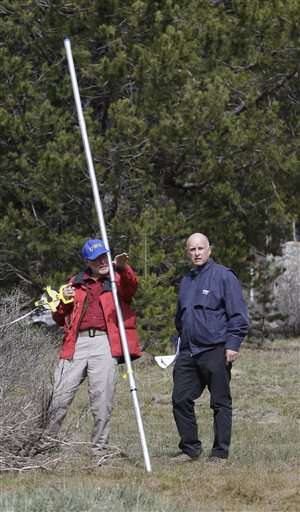
Dave Kranz, a spokesman for the California Farm Bureau Federation, said farmers have already suffered deep cutbacks in water supply during the current drought. Farmers have let hundreds of thousands of acres go fallow and laid off thousands of workers as the state and federal government slashed water deliveries from reservoirs.
Officials said Wednesday the statewide snowpack is equivalent to 5 percent of the historical average for April 1 and the lowest for that date since the state began record-keeping in 1950.
"It is such an unprecedented lack of snow, it is way, way below records," said Frank Gehrke, chief of snow surveys for the California Department of Water Resources.
-
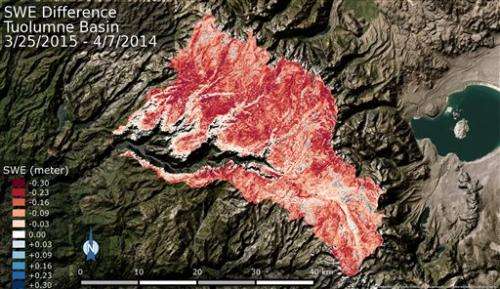
In this 3-D composite image map of the Sierra snowpack released by NASA/JPL-Caltech shows the deficit in the total volume of water contained within the Tuolumne River Basin snowpack from April 7, 2014 to March 25, 2015. California Gov. Jerry Brown ordered officials Wednesday, April 1, 2015, to impose statewide mandatory water restrictions for the first time in history as surveyors found the lowest snow level in the Sierra Nevada snowpack in 65 years of record-keeping. (AP Photo/NASA/JPL-Caltech) -
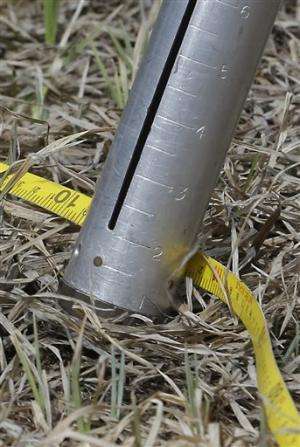
The snow pack measuring tube and tape measure used by Frank Gehrke, chief of the California Cooperative Snow Surveys Program for the Department of Water Resources, is shown after the monthly snow survey's held near Echo Summit, Calif., Wednesday, April 1, 2015. Gehrke said this was the first time since he has been conducting the survey at that he found no snow at this location at this time of the year. (AP Photo/Rich Pedroncelli)
© 2015 The Associated Press. All rights reserved.




















